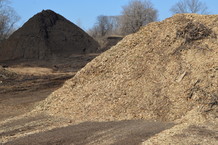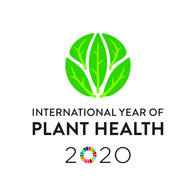
Survey of Wood Chip Availability
The impacts from COVID-19 have been wide-ranging. One of the latest impacts has been the loss of pork processing capacity. This may force Minnesota pork producers to depopulate and compost hogs on their farms. Composting requires wood chips, sawdust or other carbon sources. We are contacting you to help us link pork producers in need of material with potential sources. If you have a supply of wood chips, mulch, etc. on-hand or are regularly creating it, please take this short survey.
If you have any questions about this survey, contact imt.ops.mda@state.mn.us
|
Coronavirus Disease in Minnesota
Governor Tim Walz and Lieutenant Governor Peggy Flanagan are committed to protecting the health, safety, and well-being of Minnesotans during the COVID-19 pandemic. They have taken decisive action to curb the spread of COVID-19, support our health care providers and facilities, and mitigate the impact on Minnesota families. Please see the resources and news alerts to stay up-to-date in this ever-evolving situation.
The mn.gov/covid19 website provides the latest information on COVID-19 for the State of Minnesota.
Specific information about MDA's response to COVID-19 can be found on the MDA's COVID-19 webpage.
Keep An Eye Out For Invasive Species
Whether it is an invasive plant growing along a local trail, an unusual insect in your home, or damage to a tree in your yard, you can report what you are seeing to Arrest the Pest. The MDA can help you identify what invasive species may be in your yard, garden, and home.
Read More
Check Your Seed Labels
Seed sold for planting in the United States can be produced anywhere in the world. How do you know that the seed you are purchasing doesn’t contain invasive plants?
The seed industry takes precautions to help protect the consumer from purchasing seed that contains weeds. Seed producers minimize weeds in production fields, clean and condition seed after harvest, and test seed lots to determine the identity of contaminants in seed.
The MDA Seed Regulatory Program regulations include:
- Weed seed (seeds that are identified as weeds in agricultural, natural, or other settings) must be included as a weed seed percentage on the seed bag’s label.
- Prohibited noxious weed seeds are prohibited from being in a seed bag.
- Restricted noxious weed seeds are restricted to 25 seeds per pound. The label must list them by name and state the number of seeds per pound.
How You Can Help:
- Check your seed package label to see if weed seeds are listed so you can avoid planting species you don’t want.
- If your seed package isn’t properly labeled, report this to the MDA.
Read More

Pollinator Plantings
Each of us can do something to help pollinators. Simple acts, such as planting more pollinator-attractive flowers, leaving ornamental grasses uncut in the fall to provide overwinter habitat, or using pesticides only when necessary, can make a big impact. There are a series of Best Management Practices that you can follow to protect, improve, and create pollinator habitat in agricultural landscapes, yards and gardens, and roadsides.
Neighbors across the state are already making a big impact on pollinators and their habitat. You can take advantage of federal and state programs to help you establish new habitat. Find more information from the Minnesota Board of Soil and Water Resources.


April Weed of the Month
Siberian peashrub, Caragana arborescens, was added to Minnesota’s Noxious Weed List in 2020. Native to cold climates in eastern Asia, Siberian peashrub can grow up to 18 feet tall and has compound leaves 2-4 inches long with 8-12 pair of leaflets. It produces yellow flowers in May or June which ripen into slender brown seed pods that burst in early fall, dispersing seeds. Seeds may also be dispersed by birds and animals.
Read More
|
North American Invasive Species Management Association
The North American Invasive Species Management Association (NAISMA) supports, promotes, and empowers invasive species prevention and management across North America. To provide the invasive species management community with some extra resources, NAISMA is opening their webinar library to share their professional development and educational content until the end of April.
Spring Is Almost in the Air
As the weather warms, you may turn to planting vegetables, perennial flowers, shrubs, trees, and annuals in your yards and gardens. Local garden centers are available to help your green thumb thrive this spring. Please contact your local garden center to hear how they can safely provide you with plants and products to meet your needs. Contact information for locations can be found by searching Nursery Stock Dealer certificate holders on the MDA website.


2020 Year of Plant Health
The United Nations declared 2020 as the International Year of Plant Health (IYPH). The year is a once in a lifetime opportunity to raise global awareness on how protecting plant health can help end hunger, reduce poverty, protect the environment, and boost economic development.
Read More
|

The Minnesota Department of Agriculture has certified eight firewood producers in the state of Minnesota for heat treatment of firewood. Look for the logo when purchasing firewood. It means the firewood is safe to move and is free of emerald ash borer.
Certified firewood producers:
- Emily Forest Products
- JN FIrewood
- Paul's Fireplace Wood Inc.
- Price Firewood
- Sunset Firewood Company
- TSL Firewood
- Wood Chuckers Firewood LLC
- Leroy Habiger "The Firewood Man"
|
|